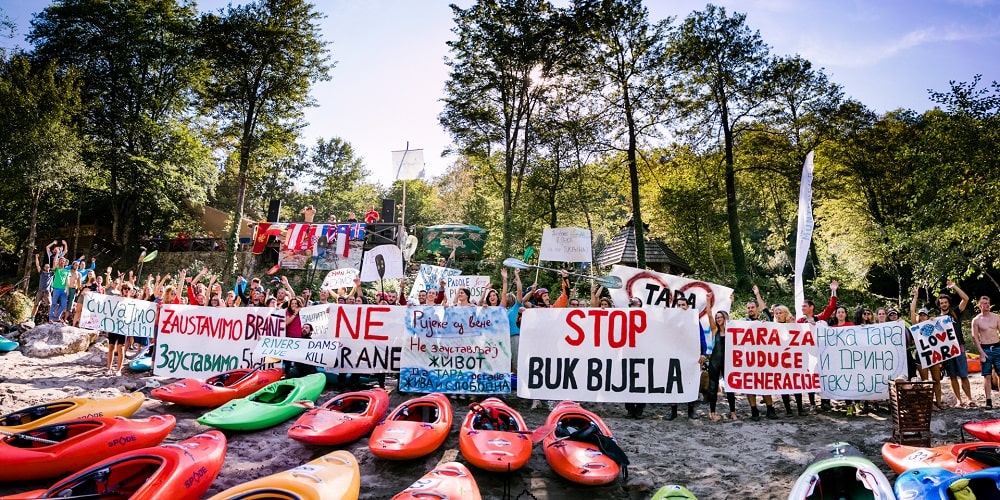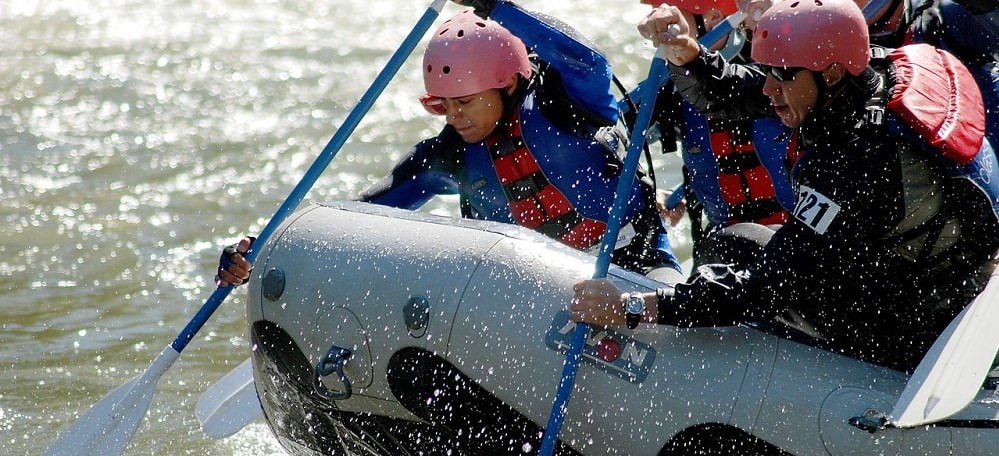Buk Bijela dam and the Upper Drina cascade
Planned as a joint project of public utilities owned by the Republika Srpska entity of Bosnia and Herzegovina and Serbia, Buk Bijela on the upper Drina is being pushed forward in violation of local legislation and international conventions.

Stay informed
We closely follow international public finance and bring critical updates from the ground.
Key facts
- Capacity: 93 MW
- Part of a series of planned hydropower plants on the upper Drina, along with the 44 MW Foča and 43 MW Paunci plants.
- In July 2017, a memorandum on construction of the project was signed with China National Aero-Technology International Engineering Corporation (AVIC-ENG).
- As of early 2022, no financing has been secured.
Key issues
- Hydropower plants on the upper Drina would wreck the key habitat for the Danube Salmon, an endangered fish species
- The environmental permitting processes have been marred with ubiquitous legal violations including a lack of transboundary consultations
- Ongoing legal dispute on whether Republika Srpska needs to obtain state-level consent to issue concessions for the project.
- Lack of information available to the public on the project’s feasibility.
Background
The river Drina is formed by the confluence of the Montenegrin rivers Tara and Piva at the border with Bosnia-Herzegovina. The 93 MW Buk Bijela hydropower plant is planned within Bosnia-Herzegovina, with its reservoir stretching upstream to the Montenegrin border.
Buk Bijela is being pushed by state-owned company Elektroprivreda Republike Srpske (ERS) and a memorandum on construction of the project was signed with China National Aero-Technology International Engineering Corporation (AVIC-ENG) in July 2017. We understand that Chinese state banks may be considering financing for the project, as the European Bank for Reconstruction and Development and the World Bank have both confirmed that they will not finance it.
A larger version of the Buk Bijela project has been disputed since the 1970s due to its impacts on the protected Tara canyon in Montenegro, which is both a UNESCO World Heritage site and part of the Durmitor National Park.
The newer version, while smaller, also suffers from a number of issues inherent to the location of the planned plant. These issues also apply to the Foča and Paunci hydropower plants planned further downstream. A fourth plant, the 44 MW Sutjeska plant, was also planned at some point but has not been mentioned lately.
Drina – the key habitat for the endangered Danube Salmon

The river Drina constitutes the most significant habitat for the endangered Danube Salmon (Hucho hucho) in terms of habitat length. Over the last 100 years Hucho hucho has undergone a massive decline. It is now found only in a few of southeast Europe’s cleanest rivers. This fish is highly sensitive to low oxygen and moderate levels of pollution and is a good indicator for river health. This means that, if the river was in the EU, the stretches of importance for the Danube Salmon, including the upper Drina, would almost certainly be in the Natura 2000 network of protected areas. Moreover, the EU Water Framework Directive virtually forbids projects that degrade the good ecological status of water bodies. So this project would be unlikely to be allowed. In fact, the IUCN assesses that the main current threat to the species is the flow regulation from hydropower dams which impact the species, and their prey, habitat and pollution. Hucho hucho is protected under Annex III of the Bern Convention and Annex II of the European Union Habitats Directive as a species of community interest whose conservation requires the designation of special areas of conservation. This means that, if the river was in the EU, the stretches of importance for the Danube Salmon, including the upper Drina, would almost certainly be in the Natura 2000 network of protected areas and definitely under the EU Water Framework Directive – which virtually forbids projects that degrade the good ecological status of water bodies.
The environmental impact assessment for Buk bijela confirms the presence of Hucho hucho in the Drina. It mentions the construction of fish passes and the fact that these have rarely been implemented in the past for economic reasons, but also that it is uncertain whether they are effective for large fish species like the Danube Salmon. It mentions instead the practice of creating artificial spawning areas. However this seems highly unlikely to be effective for a fish which requires well oxygenated, fast-flowing water and low temperatures.
[There must be] no hydropower development, including micro-hydropower in rivers holding self-sustaining populations of Danube salmon.
Freyhof et al. in the Hucho hucho in the Balkan region report
Legal battles
The upper Drina projects are subject to several ongoing legal cases.
Lack of evidence on the project’s feasibility
The upper Drina area has developed small-scale tourism facilities based on rafting and angling whose activities would be prevented by any nearby dams. Yet no evidence has been published on the economic costs and benefits of the upper Drina projects, nor their financial feasibility.
A World Bank report published in late 2021 identified numerous issues in the design and feasibility assessment for the Buk Bijela and Foča projects, including a relatively high Levelised Cost of Energy (LCOE) for the Buk Bijela plant. It recommended updating the design of the project and updating the feasibility study of the two plants.

Latest news
Skavica Dam — the last thing Albania needs
Blog entry | 22 July, 2022Instead of increasing its energy security, Albania is pushing the construction of yet more hydropower, leading to thousands losing their land and the potential extinction of Europe’s rarest cat. Will the US International Development Finance Corporation really consider financing Skavica?
Read moreThe real cost of hydropower plants in Central Asia and the Caucasus
Blog entry | 12 July, 2022International financial institutions’ support for hydropower in Central Asia and Caucasus is fuel for environmental damage and human rights violations.
Read moreThe river Bosna – a neglected gem of Bosnia and Herzegovina
Blog entry | 22 March, 2022A new survey on fish and other aquatic animals confirms the river should be protected, not dammed.
Read moreRelated publications
The Upper Horizons complex, Bosnia and Herzegovina
Briefing | 18 December, 2023 | Download PDFThe Upper Horizons hydropower complex has been planned since the mid-20th century, and is planned to consist of three plants — Dabar, Nevesinje and Bileća — linked by a series of tunnels and channels. If completed, it would have a devastating impact on the karst ecosystems of eastern Herzegovina and beyond.
The Ulog hydropower plant on the river Neretva, Bosnia and Herzegovina
Briefing | 18 December, 2023 | Download PDFThe Ulog plant, with a 53-metre high dam, is currently being built on the upper Neretva in the Republika Srpska entity of Bosnia and Herzegovina, in the middle of a nominated candidate Emerald site – an area which should be protected under the Bern Convention.
Joint Statement On the Expansion of the Emerald Network in Countries of the Western Balkans by scientists and representatives of NGOs
Statement | 13 February, 2023 | Download PDFIn early December 2022, 39 scientists and representatives of NGOs from Albania, Austria, Bosnia and Herzegovina, Bulgaria, Croatia, Germany, Greece, Montenegro, North Macedonia, Serbia and Switzerland joined efforts to prepare a shadow list and a map o
